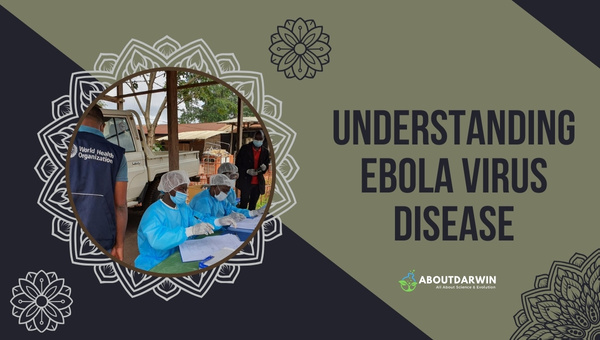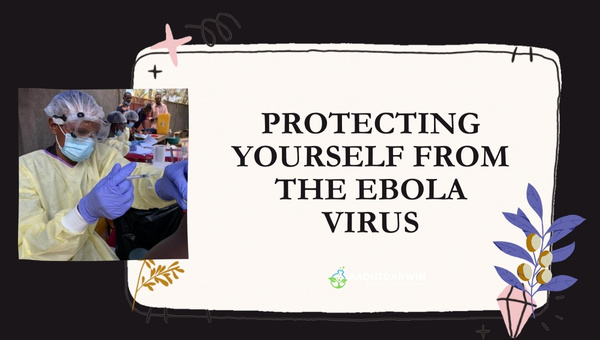Physical Address
304 North Cardinal St.
Dorchester Center, MA 02124
Imagine a virus so lethal it sends shivers down the spine of healthcare professionals worldwide. The Ebola Virus Disease (EVD), with its terrifying symptoms and high death rate, is a reality that we must face.
But don’t worry—you’re not powerless! Understanding how to prevent and treat this disease can be your shield against this invisible enemy.
You’ve heard the horror stories: a sudden fever, intense weakness, muscle pain, and, in some tragic cases, uncontrollable bleeding. When it comes to tackling the Ebola Virus Disease, knowing what you’re up against is half the battle.
Contents
Ebola Virus Disease (EVD) is a severe, often fatal illness that affects humans and nonhuman primates such as monkeys, gorillas, and chimpanzees.

The disease was first identified in 1976 in two simultaneous outbreaks near the Ebola River, hence the name.
Ebola Virus Disease (EVD), previously referred to as Ebola Hemorrhagic Fever, is a rare but deadly viral infection caused by one of five strains of the Ebola virus. It’s known for causing an acute, severe illness that can be fatal if not treated promptly. Here are some essential points about it:
Understanding how this disease operates is critical to preventing further spread and treating people who have been infected. Epidemiological investigations are continuously conducted to understand better how each strain impacts people differently and the strategies required for their containment.
The term “Ebola Virus” integrates both the disease’s causative agent and its associated clinical condition. This keyword sums up efficiently what we’ve been discussing – a distinctively virulent pathogen originating from certain regions around the African continent, leading to an often deadly disease if untreated appropriately.
Also Read: Sabouraud Dextrose Agar (SDA): Composition, Uses, and More
Here is a table that you should see once :
| Early Indicators | Progressing Symptoms |
|---|---|
| Fever | Diarrhoea |
| Fatigue | Vomiting |
| Muscle aches | Rash |
| Headache | Impaired kidney and liver function |
| Sore throat | Symptoms of low blood pressure |
Now, see these points in detail.
Understanding the initial signals of Ebola Virus Disease is critical for its prevention and control. The indicators include:
It is important to note that these early indicators resemble symptoms of other diseases, such as malaria or typhoid fever.
As the Ebola Virus Disease further invades a person’s system, their health deteriorates with these manifestations:
These details should provide comprehensive knowledge about what signs one needs to look out for when dealing with possible Ebola Virus Disease cases. Make sure if you notice any of such symptoms, seek medical assistance promptly.
Also Read: Isostatic Rebound: Uncovering Post-glacial Rebound Process
Ignorance or delayed treatment of Ebola virus disease can lead to severe health complications, often proving fatal. The virus has been seen to agitate the immune system, leading to a cascading impact on several body functions.
Ebola virus disease, in its advanced stages, triggers a multitude of reactions from our body that further amplifies the distress. Among these are:
An infected individual may observe signs such as bloody diarrhea and vomiting, which is due to internal bleeding. External bleeding in the form of nosebleeds or gingival hemorrhages can also be noticed.
There’s an onset impairment in kidney and liver functioning, which gradually deteriorates if not attended on time.
Due to persistent symptoms like vomiting and diarrhea, extreme weight loss is quite common.
Persistent hematemesis (vomiting blood) could lead to critical levels of dehydration that might require immediate medical attention.
Also Read: Who Owns MyHeritage? Unveiling the Ownership Mystery!
The treatment of Ebola Virus Disease (EVD) predominantly involves supportive care and symptom management, as there is currently no official cure. The aim while treating a patient is to simultaneously boost the person’s immune system so it can fight off the virus effectively and manage symptoms that may lead to further complications.
Since vomiting and diarrhea are common symptoms of EVD, patients often suffer from severe dehydration. Rehydrating patients with either oral rehydration solutions or intravenous fluids is paramount.
Other symptoms like fever, pain, and nausea can be managed using appropriate medications.
Ensuring that patients receive balanced nutrition helps in boosting their strength and immune health.
Secondary infections often escalate the severity of EVD. Therefore, they are treated promptly with necessary antibiotics or antivirals.
When it comes to diseases such as the Ebola Virus Disease, prevention is undoubtedly better than cure.

Being aware of and understanding potential risks, along with implementing suitable prevention measures, can significantly reduce the likelihood of contracting this severe illness.
Preventive measures are particularly important for those planning to travel to regions where Ebola outbreaks have occurred. While you should always follow trusted health advice and advisories before deciding to travel, here are some practical steps for reducing exposure if you find yourself in high-risk areas:
Also Read: Sanborn Fire Insurance Maps: A Comprehensive Guide
The incubation period, which is from symptom onset to exposure, varies from 2 to 21 days, with an average of 8-10 days.
Symptoms can start appearing as early as two days or as late as 21 days after exposure to the virus.
Yes, patients can recover from Ebola Virus Disease with appropriate medical care. Survivors may also develop some immunity to the strain of the virus they contracted.
Ebola Virus Disease is transmitted through direct contact with blood, secretions, organs or other bodily fluids of infected people or surfaces and materials contaminated with these fluids.
Also Read: Sanborn Fire Insurance Maps: A Comprehensive Guide
Ebola Virus Disease (EVD) is a deadly infectious illness that has claimed numerous lives worldwide. It primarily spreads through contact with the blood, secretions, organs, or other bodily fluids of infected people, and signs such as fever, muscle pain, and fatigue are typically the first to appear.
As the disease progresses, symptoms such as diarrhea, vomiting, and rash occur. Without treatment, severe cases can lead to internal and external bleeding, which can be fatal.
Currently, there’s no specific treatment approved for EVD, but care rehydration with oral or intravenous fluids- and treatment of particular symptoms improves survival. Prevention mainly involves practicing good hygiene, such as hand washing.